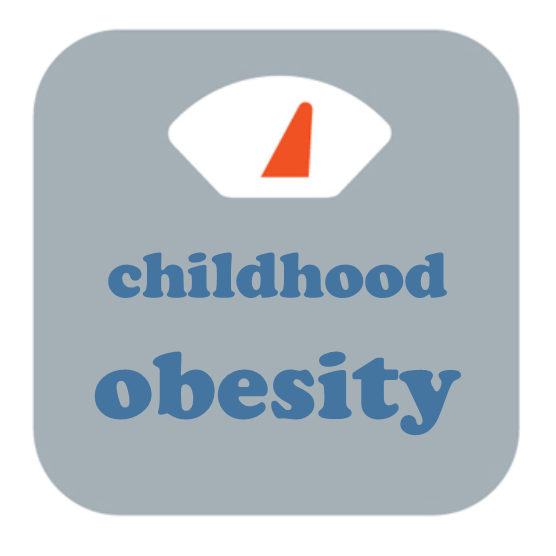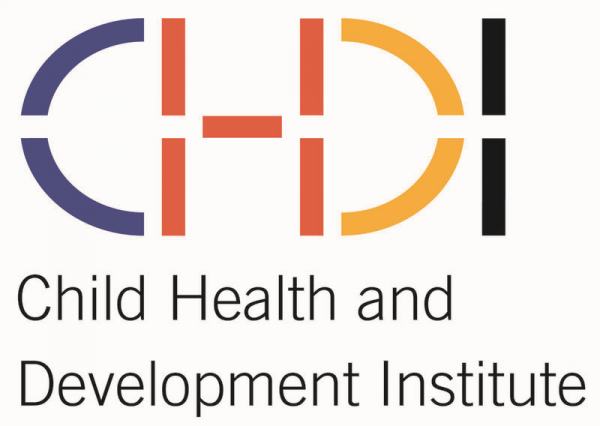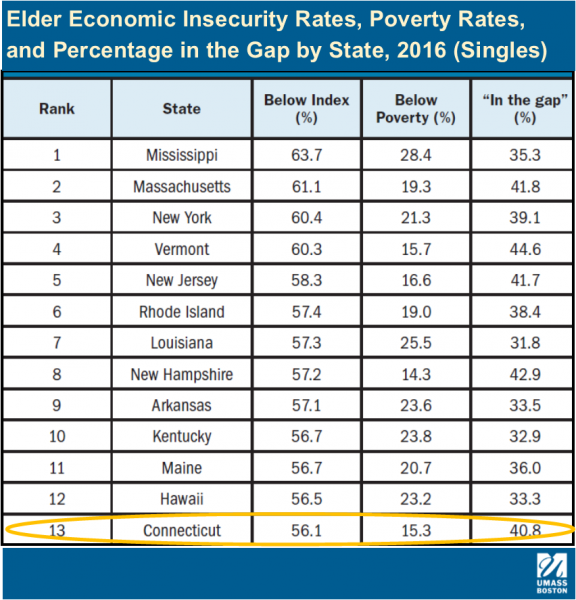Three Foundations Join Forces to Advance Obesity Prevention Efforts in Connecticut
/If an ounce of prevention is truly worth a pound of cure, efforts in Connecticut may hold the key to turning around the nation’s obesity epidemic – especially among children. Connecticut has the 10th lowest adult obesity rate in the nation, according to a study released earlier this year. The state’s adult obesity rate is 26 percent, up from 16.0 percent in 2000 and from 10.4 percent in 1990. That places Connecticut 42nd among the 50 states. The childhood obesity rate is 30 percent for 10-17 year olds, ranking 29th among the states, and 15 percent for 2-4 year olds qualifying for federal nutrition assistance, the 12th highest obesity rate in the country. And that is where the focus of three Connecticut-based foundations will be, as they combine forces to award $194,884 in grants for obesity prevention projects in Connecticut.
The grants are being funded with contributions from the Children's Fund of Connecticut ($139,884), the Connecticut Health Foundation ($30,000), and Newman's Own Foundation ($25,000) and will be administered by CFC's non-profit subsidiary, the Child Health and Development Institute (CHDI).
Funded projects will inform and advance efforts to prevent obesity by improving early feeding practices for diverse socio-economic, racial, and ethnic groups across various early childhood settings.
"Childhood obesity is a wide-spread public health crisis disproportionately impacting racial and ethnic minorities and low-income children. Once obesity sets in it is very difficult to reverse; however, we are still searching for effective ways to prevent it," said Judith Meyers, President and CEO of the Children's Fund of Connecticut.
"New research on infant and toddler feeding practices shows promising results. These grants to improve infant and toddler feeding practices will help us learn more about what works so we can get ahead of the curve."
The competitive application process administered by CHDI yielded the following funded projects:
- Healthy Eating through Group Well Child Care: $59,904, Yale University
Under the direction of Marjorie Rosenthal, MD, MPH, the project examines the impact of embedding a healthy eating curriculum within group well child care, an evidenced-based model of primary care delivery at the Yale New Haven Hospital Primary Care Center. Expected outcomes include less rapid weight gain for infants in the first six months and improvement in mothers' weight over the first year of her child's life.
- Barriers to Participation in CACFP in CT: $64,998, UConn, Rudd Center for Food Policy and Obesity
Tatiana Andreyeva, PhD, Associate Professor at the UConn Rudd Center, will lead a study that documents and addresses barriers to participation in the federal Child and Adult Care Food Program (CACFP) among Connecticut child care centers serving infants and toddlers from low-income families. Connecticut has one of the lowest CACFP participation rates in the nation. The project team will use surveys and stakeholder interviews to assess perceived and actual barriers to CACFP participation and assess outreach and recruitment strategies currently used in Connecticut to increase center enrollment in CACFP.
- Supporting Healthy Eating in Low-Income Toddlers: $64,982, UConn, Allied Health Sciences
Under the direction of Valerie B. Duffy, PhD, RD and Jennifer L. Harris, PhD, MBA, the project will develop and assess a coordinated communications program to deliver consistent messages to low-income parents in East Hartford about best practices for feeding toddlers (1-2 year olds). The messages will be delivered through pediatric clinics, WIC offices, and Family Resource centers in East Hartford. The project will coordinate infant feeding messages and promote responsive feeding across diverse populations and settings.
Funding is also supporting Connecticut Children's Medical Center's Office for Community Child Health to develop and disseminate training for pediatric primary care providers. The training will address key messages to educate parents about best practices in feeding infants and toddlers.
These projects represent the second cycle of funding from CFC in the early childhood obesity prevention arena. Since 2015, CFC has awarded more than $420,000 to advance early childhood obesity prevention.
The work of the first round of grantees helped CFC and CHDI identify public policies that contribute to obesity prevention, test the effectiveness of messages promoting obesity prevention in infants and toddlers, support breast feeding strategies for hospitals, and harness existing medical record data to identify early childhood obesity risks.
The current round of funding was informed by the Robert Wood Johnson Foundation's recently released Feeding Guidelines for Infants and Young Toddlers: A Responsive Parenting Approach, which highlights new areas of research and practice in obesity prevention. The data-rich State of Obesity: Better Policies for a Healthier America, published earlier this year, was a project of the Robert Wood Johnson Foundation and the Trust for America’s Health.



 Food and beverage companies often target marketing for nutrient-poor products such as candy, sugary drinks, snack foods, and fast-food restaurants to Hispanic audiences, including youth, the researchers state. They cite previous research that has documented disproportionate exposure to unhealthy food marketing by Hispanic youth in their communities and on TV, but theirs is the first examination of the phenomenon on the internet.
Food and beverage companies often target marketing for nutrient-poor products such as candy, sugary drinks, snack foods, and fast-food restaurants to Hispanic audiences, including youth, the researchers state. They cite previous research that has documented disproportionate exposure to unhealthy food marketing by Hispanic youth in their communities and on TV, but theirs is the first examination of the phenomenon on the internet. g vulnerable populations,” according to the publication’s website, “with the goal of providing optimal outcomes and ultimately health equity for all.” The journal intends to provide coverage ranging from translational research to prevention, diagnosis, treatment, and management of disease and illness, in order to serve as a primary resource for organizations and individuals who serve these populations at the community, state, regional, tribal, and national levels.
g vulnerable populations,” according to the publication’s website, “with the goal of providing optimal outcomes and ultimately health equity for all.” The journal intends to provide coverage ranging from translational research to prevention, diagnosis, treatment, and management of disease and illness, in order to serve as a primary resource for organizations and individuals who serve these populations at the community, state, regional, tribal, and national levels.
 There are a series of steps that your body goes through to develop immunity through vaccination, the
There are a series of steps that your body goes through to develop immunity through vaccination, the 


 In Stamford, CHDI assisted in training school social workers and psychologists to deliver
In Stamford, CHDI assisted in training school social workers and psychologists to deliver 




 The report noted that “Medicaid beneficiaries are prescribed opioids at twice the rate of the rest of the population, and research indicates they are at 3 to 6 times greater risk of a fatal overdose.” The report also observed the impact of the epidemic on the nation’s prison population: Eighty percent of prisoners have a history of drug abuse; 50 percent are addicted to drugs; 60 to 80 percent of prisoners abusing drugs commit a new crime after release; and approximately 95 percent of addicted prisoners relapse when they’re released, according to National Association of Drug Court Professionals (NADCP) data.
The report noted that “Medicaid beneficiaries are prescribed opioids at twice the rate of the rest of the population, and research indicates they are at 3 to 6 times greater risk of a fatal overdose.” The report also observed the impact of the epidemic on the nation’s prison population: Eighty percent of prisoners have a history of drug abuse; 50 percent are addicted to drugs; 60 to 80 percent of prisoners abusing drugs commit a new crime after release; and approximately 95 percent of addicted prisoners relapse when they’re released, according to National Association of Drug Court Professionals (NADCP) data.

 iven the nation’s key public health target of limiting added sugars in children’s diets, flavored milk has come under scrutiny in the context of school nutrition, UConn Today recently reported.
iven the nation’s key public health target of limiting added sugars in children’s diets, flavored milk has come under scrutiny in the context of school nutrition, UConn Today recently reported.
 Among adults who admit to not always using safety belts in the back seat, 4 out of 5 surveyed say short trips or traveling by taxi or ride-hailing service are times they don't bother to use the belt. Nearly 40 percent of people surveyed said they sometimes don't buckle up in the rear seat because there is no law requiring it. If there were such a law, 60 percent of respondents said it would convince them to use belts in the back seat. A greater percentage said they would be more likely to buckle up if the driver could get pulled over because someone in the back wasn't buckled.
Among adults who admit to not always using safety belts in the back seat, 4 out of 5 surveyed say short trips or traveling by taxi or ride-hailing service are times they don't bother to use the belt. Nearly 40 percent of people surveyed said they sometimes don't buckle up in the rear seat because there is no law requiring it. If there were such a law, 60 percent of respondents said it would convince them to use belts in the back seat. A greater percentage said they would be more likely to buckle up if the driver could get pulled over because someone in the back wasn't buckled.
 The Governors Highway Safety Association issued a report in 2015, "Unbuckled In Back," analyzing the difference in highway fatalities between states that require rear seat passengers to buckle up and those that do not, the Hartford Courant reported. At a Connecticut legislative hearing that year, the paper noted, state Transportation Commissioner James Redeker said that everyone in a passenger vehicle should buckle up, saying statistics show "people become projectiles because they're not strapped in a safety device."
The Governors Highway Safety Association issued a report in 2015, "Unbuckled In Back," analyzing the difference in highway fatalities between states that require rear seat passengers to buckle up and those that do not, the Hartford Courant reported. At a Connecticut legislative hearing that year, the paper noted, state Transportation Commissioner James Redeker said that everyone in a passenger vehicle should buckle up, saying statistics show "people become projectiles because they're not strapped in a safety device." A pilot partnership between the AGP and CCSU establishes a new base of operations for the
A pilot partnership between the AGP and CCSU establishes a new base of operations for the 
 Márquez-Greene will also work with the School of Education & Professional Studies to establish a Center for Social & Emotional Learning to provide education, training, and research to the campus, community, and state. Other expected collaborations include the training of CCSU undergraduate and graduate students in the Marriage & Family Therapy, Psychology, and Counseling programs in the use of social-emotional curriculum in the classroom.
Márquez-Greene will also work with the School of Education & Professional Studies to establish a Center for Social & Emotional Learning to provide education, training, and research to the campus, community, and state. Other expected collaborations include the training of CCSU undergraduate and graduate students in the Marriage & Family Therapy, Psychology, and Counseling programs in the use of social-emotional curriculum in the classroom.






















